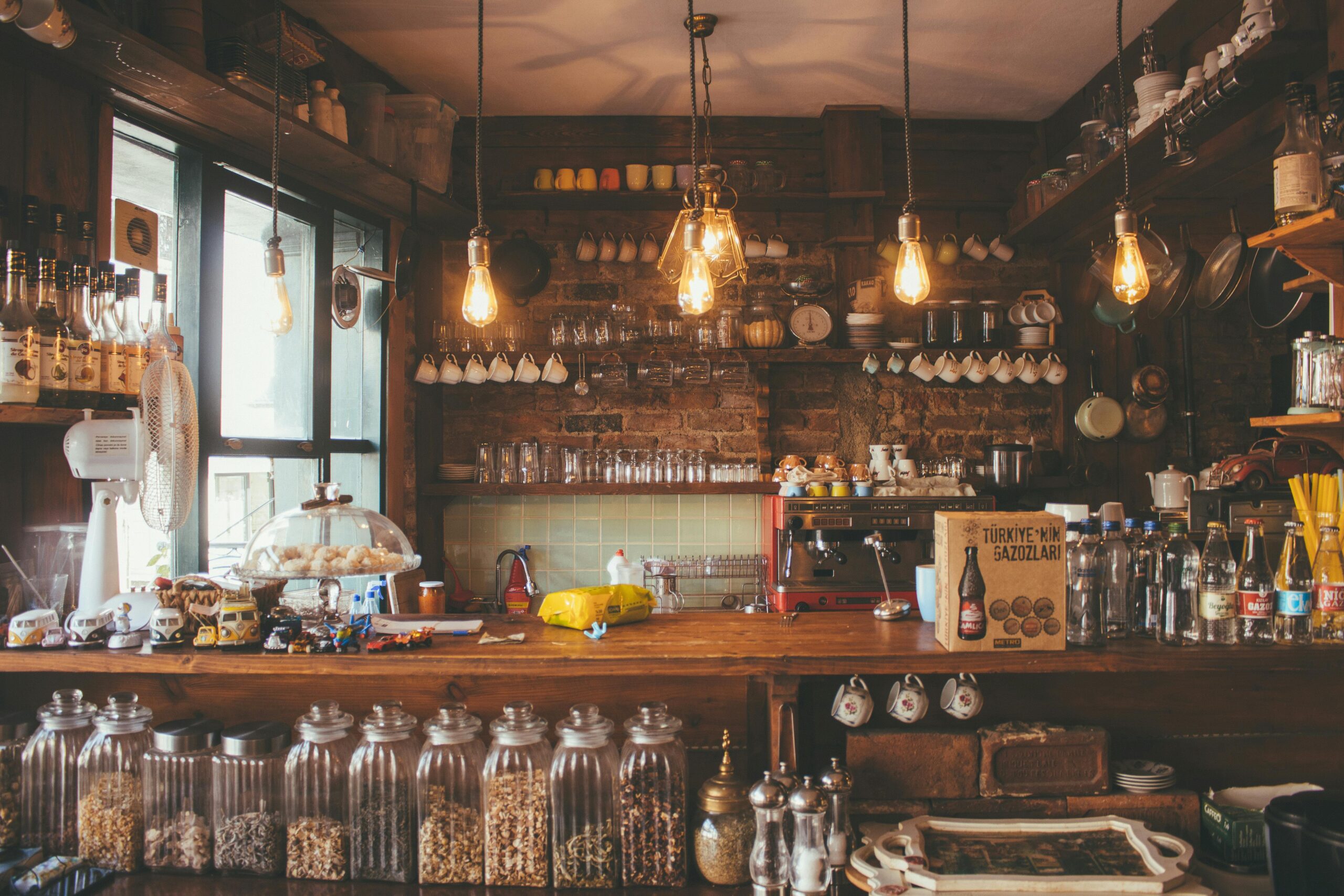Coffee has become an integral part of American culture, evolving from its humble beginnings to a diverse landscape of flavors and experiences. Today, America’s favorite coffee brands dominate the market, offering a wide range of unique blends and brewing methods. As specialty coffee rises in popularity, consumers increasingly seek out local shops that reflect their community’s taste. This blog will explore the history of coffee in America, the emergence of top coffee chains, and the growing trends that shape the industry and customer preferences across the nation.
History of Coffee in America
Coffee has a storied history in America, beginning as early as the 17th century. It has transformed into one of America’s favorite beverages over the centuries. Here are some key milestones that highlight its evolution:
- Early Introduction: Coffee first arrived in the American colonies in the 1600s, but it didn’t gain popularity until after the Boston Tea Party in 1773, when patriots turned to coffee as a patriotic alternative.
- 19th Century: By the 1800s, coffee culture thrived with the establishment of coffee snobbery and specialty roasters. The invention of instant coffee in 1901 added convenience, impacting its consumption across the nation.
- Post-War Era: The 20th century saw the emergence of major brands and fast-food coffee outlets, leading to an explosion in coffee consumption. From diner drip coffee to espresso drinks, coffee became a staple in American daily life.
- Recent Trends: In the last few decades, America’s favorite coffee brands exploded with specialty shops that focus on ethically sourced beans and artisanal brewing techniques. This trend illustrates a shift towards quality, sustainability, and unique flavor experiences.
Today, coffee is more than just a drink; it embodies a vibrant culture and a strong connection to community, making it one of America’s favorite coffee brands.
The Rise of Specialty Coffee
Specialty coffee has transformed the landscape of America’s Favorite Coffee Brands, elevating the coffee experience from a simple morning ritual to a sophisticated cultural phenomenon. As more consumers show a discerning taste for quality and flavor, this segment has flourished. Here’s a closer look at the rise of specialty coffee:
Quality Over Quantity: Specialty coffee emphasizes the quality of beans, sourcing them from single-origin farms. Brands now prioritize unique flavor profiles and superior brewing methods.
Barista Expertise: Skilled baristas play a vital role. Many cafes offer training, ensuring staff can guide customers in selecting the ideal brew.
Customer Engagement: Specialty coffee shops often host tastings and workshops, fostering a community of coffee enthusiasts eager to learn and explore.
Sustainable Sourcing: With a focus on sustainability, many brands are adopting direct trade practices, ensuring fair compensation to farmers and environmentally conscious methods of production.
As America’s Favorite Coffee Brands continue to embrace these values, specialty coffee is not just a trend; it’s a movement that reshapes how Americans appreciate their daily brew.
Top Coffee Chains in the U.S.
When it comes to America’s Favorite Coffee Brands, several chains dominate the market, each offering unique blends and experiences. Here’s a comparison of the top contenders:
| Coffee Chain | Signature Drink | Average Price | Convenience |
|---|---|---|---|
| Starbucks | Pumpkin Spice Latte | $4.50 | Extensive locations |
| Dunkin’ | Original Blend | $2.00 | Drive-thru options |
| Peet’s Coffee | Major Dickason’s Blend | $4.00 | Cozy atmospheres |
| Caribou Coffee | Caramel High-Rise | $4.25 | Locally-sourced beans |
| Tim Hortons | Double-Double | $2.50 | Canadian roots; great snacks |
Highlights:
- Starbucks leads the pack with its vast menu and global footprint.
- Dunkin’ offers affordability and speed, making it a go-to morning stop.
- Peet’s Coffee emphasizes quality, sourcing high-grade beans for coffee aficionados.
- Tim Hortons provides a taste of Canada, featuring both coffee and delicious baked goods.
In summary, America’s Favorite Coffee Brands not only represent different tastes but also cater to varying customer needs, from premium options to quick service.
Local Coffee Shops and Their Unique Offerings
Local coffee shops play a vital role in the landscape of America’s Favorite Coffee Brands. They offer a personal touch that often eludes larger chains, focusing on unique offerings and community connections. Here are several aspects that set local coffee shops apart:
Artisanal Brews: Many local shops prioritize high-quality, artisanal coffee sourced from small farms. This often leads to unique blends and single-origin options not found in major chains.
Custom Creations: Local baristas frequently create signature drinks, including seasonal specialties that reflect local tastes.
Community Focus: These shops often act as social hubs, providing a space for community events, art shows, and live music, enhancing the customer experience.
Sustainability: Many local coffee shops emphasize sustainable practices, such as eco-friendly packaging and sourcing beans from fair-trade suppliers.
In comparison to larger chains, these unique offerings not only strengthen community bonds but also elevate the coffee experience. When you explore America’s Favorite Coffee Brands, don’t overlook what local shops contribute to coffee culture!
Comparing Quality, Price, and Convenience
When exploring America’s Favorite Coffee Brands, understanding how they stack up in terms of quality, price, and convenience is essential for making informed choices. Here’s a concise comparison to help you navigate the numerous options available:
| Coffee Brand | Quality (1-5) | Average Price ($) | Convenience (1-5) |
|---|---|---|---|
| Starbucks | 4 | 4.00 | 5 |
| Dunkin’ | 3 | 2.50 | 5 |
| Peet’s Coffee | 5 | 4.50 | 4 |
| local coffee shops | 4 | 3.00 | 3 |
| Caribou Coffee | 4 | 3.75 | 4 |
Key Insights:
- Quality: Specialty brands like Peet’s Coffee often score higher due to their unique blends and sourcing practices.
- Price: Dunkin’ offers wallet-friendly options, making it accessible for everyday consumers.
- Convenience: Large chains like Starbucks and Dunkin’ dominate with widespread locations and drive-thru services.
By weighing these factors, you can better appreciate how different brands fit your lifestyle while enjoying America’s Favorite Coffee Brands!
Sustainable Practices in Coffee Production
Sustainability is crucial for America’s Favorite Coffee Brands, ensuring that coffee production benefits both the environment and farming communities. Here are key sustainable practices adopted by these brands:
- Shade-Grown Coffee: Brands that use shade trees in coffee cultivation help preserve biodiversity.
- Water Conservation: Efficient water management reduces waste and pollution in coffee farming.
- Organic Farming: Many top brands currently embrace organic certifications, avoiding harmful pesticides and supporting soil health.
Comparison of Sustainable Practices
| Brand | Shade Grown | Organic Certified | Fair Trade |
|---|---|---|---|
| Starbucks | Yes | Yes | No |
| Peet’s Coffee | Yes | No | Yes |
| Dunkin’ | No | Yes | Yes |
| Blue Bottle Coffee | Yes | Yes | No |
By implementing these practices, America’s Favorite Coffee Brands not only support their customers’ ethical preferences but also contribute to a more sustainable future for coffee production. Hence, consumers enjoy their coffee knowing they are making environmentally and socially responsible choices.
Trends in the Coffee Industry
The coffee industry constantly evolves, driven by consumer preferences and innovations. Here are some notable trends shaping America’s Favorite Coffee Brands:
Sustainability: Brands now prioritize eco-friendly practices. Consumers increasingly seek coffee sourced from sustainable farms, leading to a rise in certifications like Fair Trade and Rainforest Alliance.
Specialty Coffee: The demand for high-quality, unique coffee varieties has surged. Roasters emphasize single-origin beans with rich flavor profiles, capturing the interest of coffee enthusiasts.
Health-Conscious Options: Health trends influence coffee, with low-calorie and superfood additions gaining traction. Popularity grows for alternatives like oat milk and mushroom coffee.
Convenience: Ready-to-drink (RTD) coffee products are booming. Busy lifestyles prompt brands to offer pre-packaged iced coffees and coffee-infused beverages.
Technology Integration: Smart coffee machines and apps streamline brewing, allowing consumers to connect with their preferred America’s Favorite Coffee Brands.
These trends reflect a dynamic shift, showcasing how consumer desires dictate the future landscape of coffee culture in America.
Customer Preferences and Popular Flavors
When it comes to America’s Favorite Coffee Brands, customer preferences greatly influence the market landscape. Taste, convenience, and brand identity play pivotal roles.
Popular Flavors
- Classic Brews: Dark roast and medium roast maintain their dominance among traditional coffee drinkers.
- Flavored Coffees: Seasonal favorites like pumpkin spice and hazelnut attract wide audiences, especially in fall.
- Cold Brews: Gaining traction, cold brews cater to those seeking smoother, less acidic options.
Customer Trends
- Health Conscious Choices: Many consumers opt for organic and low-calorie options, demanding transparency in ingredient sourcing.
- Customization: Personalized drinks, with various milk alternatives and flavor shots, keep customers returning to America’s Favorite Coffee Brands.
Key Influencers
- Millennials and Gen Z: Younger generations prioritize sustainability and ethical sourcing, reshaping product offerings among popular brands.
- Social Media: Platforms like Instagram drive trends, leading to viral drinks that influence consumer preferences dramatically.
In summary, understanding taste disparities and preferences helps coffee brands innovate and connect with devoted customers.
Coffee Culture Across Different States
Coffee culture in the U.S. varies significantly from state to state, influenced by local preferences, traditions, and even climates. Here’s a glimpse into how America’s Favorite Coffee Brands adapt to diverse coffee cultures:
West Coast: Known for its artisan approach, this region showcases a strong preference for specialty brews and third-wave coffee shops. Chains like Stumptown and Blue Bottle thrive here.
Northeast: New York and Boston feature a fast-paced coffee culture. Many prefer convenient, high-quality grab-and-go options from brands like Dunkin’ and Starbucks.
Midwest: Coffee in this region leans towards community-focused shops. Brands such as Intelligentsia and local favorites emphasize quality and sustainability, representing America’s Favorite Coffee Brands.
South: Traditionally known for its sweet tea, the South now embraces coffee. Brands like Café du Monde capture local tastes with unique blends and chicory coffee.
Pacific Northwest: Home to some of the best-known coffee brands, this area emphasizes ethical sourcing and innovative brewing methods, showcasing the region’s commitment to quality.
Overall, each state contributes to the rich tapestry of coffee culture, reflecting the unique identity of America’s Favorite Coffee Brands across the nation.
Future Predictions for Coffee Brands in America
As coffee culture continues to evolve, several trends signal the future of America’s Favorite Coffee Brands. Here are key predictions shaping the landscape:
Sustainability Focus: Consumers increasingly prefer brands that prioritize sustainability. Expect more companies to adopt eco-friendly practices, from sourcing beans to packaging.
Health-Conscious Options: With a rise in health awareness, brands will likely introduce innovative beverages, such as low-sugar, functional coffees infused with vitamins or adaptogens.
Technology Integration: Smart coffee machines and mobile ordering apps will enhance customer experiences, allowing brands to personalize offerings and streamline service.
Diverse Flavor Profiles: There is a growing interest in unique flavors and craftsmanship. Hence, America’s Favorite Coffee Brands may embrace limited editions and local ingredients to stand out.
Coffee-on-the-go: Convenience remains paramount. Expect brands to offer more ready-to-drink options and larger networks of drive-thru locations.
By recognizing these shifts, America’s Favorite Coffee Brands can adapt and thrive in an ever-competitive market. The future looks promising for coffee lovers and brands alike!


